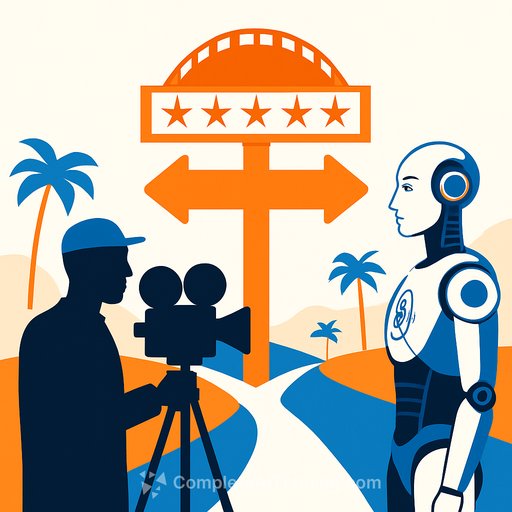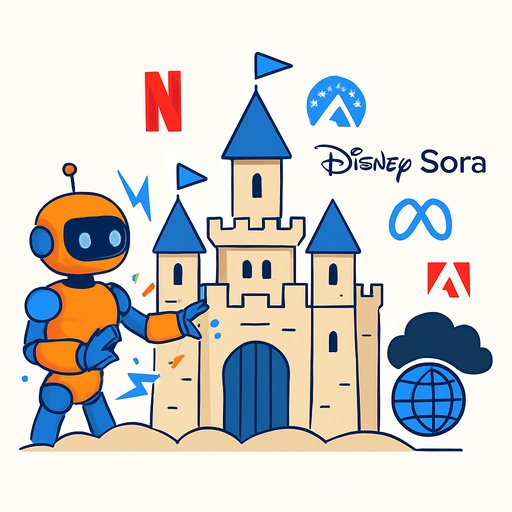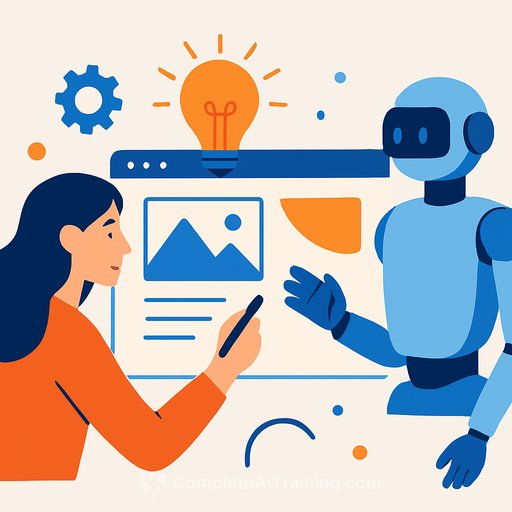In Hollywood: Reinventing Creativity or Redrawing the Lines of Power?
Netflix’s recent use of Runway’s AI video generation technology is more than just a technical upgrade. It signals a shift in how Hollywood creates and controls content. By adopting AI to speed up and reduce the cost of visual effects, Netflix has transformed a process that once took weeks into one that can be done in days. But this efficiency gain raises bigger questions about creativity, the livelihoods of industry workers, and who holds influence in entertainment.
Hollywood has adapted to new technologies before—sound, color, CGI. Yet AI is different. It’s not a simple tool. It can autonomously generate images, animate sequences, and suggest edits without constant human input. This blurs the line between human creativity and algorithmic production, forcing us to rethink what craftsmanship really means.
The Impact on Visual Effects Artists
For many visual effects artists, especially those in entry and mid-level roles, AI threatens job security. Tasks that once required careful frame-by-frame work are now automated, potentially reducing opportunities for newcomers. This shift risks concentrating creative control among fewer people, limiting the diversity of voices and ideas shaping what we see on screen.
Potential for Decentralization
On the flip side, AI tools like Runway’s can empower smaller creators and independent artists. Without the backing of a big studio budget, a single creator can now produce effects-rich content that previously required large teams. This could break down traditional gatekeeping and open doors for fresh storytelling. But it’s unclear if the industry will welcome this decentralization or use AI to reinforce existing hierarchies and push content shaped primarily by data-driven algorithms.
The Battle Over Content Creation
The stakes are high for streaming giants like Netflix. AI offers a way to cut costs, speed up production, and fine-tune content for maximum viewer engagement. Meta’s interest in acquiring Runway AI highlights a growing tech competition over who owns the future of content creation. However, leaning too heavily on AI risks pushing storytelling toward formulaic, data-optimized output that prioritizes clicks and watch time over bold ideas and cultural depth.
Workforce Shifts and Skills Challenges
As AI takes over routine tasks, new roles will emerge—AI supervisors, creative technologists, machine learning editors. But these positions require specialized knowledge and training. Many mid-level artists might struggle to transition, widening the gap between those with access to AI skills and those displaced by automation. This change compounds existing challenges in an industry already known for freelance precariousness and inequality.
Creators’ Rights and Ethical Questions
AI-generated imagery raises tough questions about authorship and ownership. When machines create visuals by remixing millions of existing works, often without permission or compensation, where do creators’ rights stand? Current legal systems lag behind, leaving artists uncertain. Audiences may also question the authenticity of AI-heavy content, as the unique human touch risks being lost when machines take on creative roles.
Transparency and Collaboration
The best way forward is collaboration between humans and AI. AI should support, not replace, human creativity. Involving creative professionals in AI development ensures technology enhances rather than erases artistic skill. Unions and guilds need to negotiate protections, including fair pay for AI-assisted work and retraining opportunities to widen access to new creative roles.
Transparency will be vital. Viewers increasingly want to know how content is made—not just for ethics but to maintain trust. Imagine a future where productions disclose their level of AI involvement, helping audiences appreciate the blend of human and machine effort. This openness could lead to new respect for the craft of directing AI, much like the recognition visual effects artists receive today.
Netflix’s adoption of Runway’s AI signals a turning point for Hollywood’s creative and economic future. The industry faces a clear choice: use AI to empower a wider range of storytellers and elevate human artistry, or let it deepen inequalities, commodify creativity, and concentrate control in the hands of a few data-rich studios. This isn’t just about technology—it’s about who shapes culture in an AI-driven era.
If the focus shifts too far toward efficiency, Hollywood risks losing the soul of storytelling. The challenge is deciding whether AI will be a tool that inspires creativity or a master that limits it. The future of film depends on whether many voices write the stories or just cold algorithms.
Your membership also unlocks:






